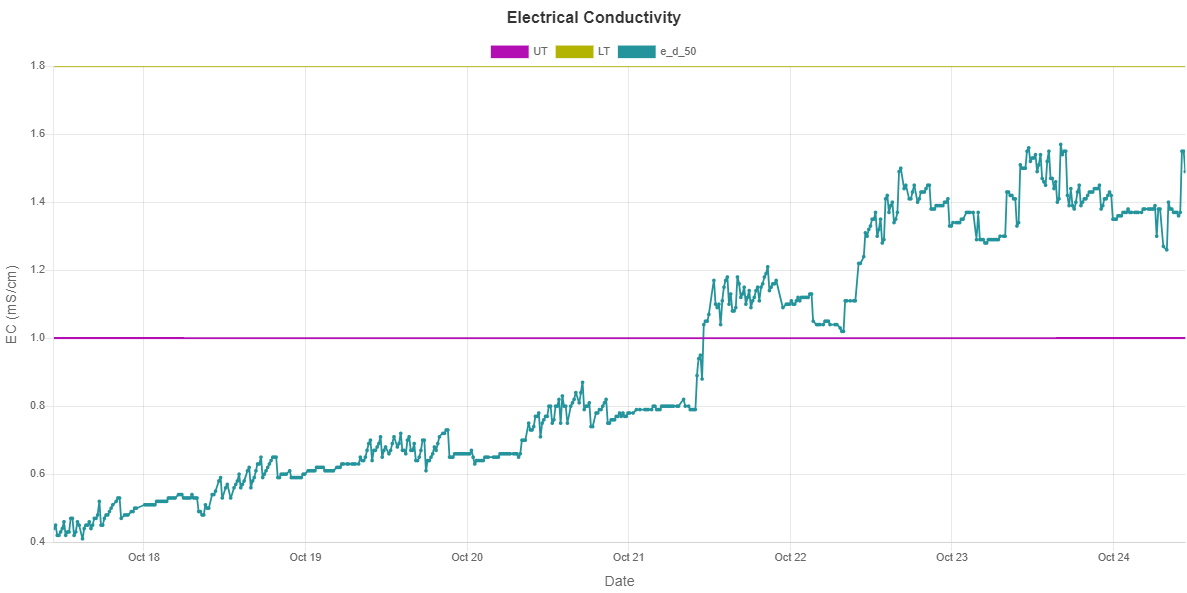Using EC Data for Better Decisions
Keeping an eye on your EC (Electrical Conductivity) levels is key to providing the right nutrients for your plants. For strawberry growers, here’s what to look out for:
High EC (above 1.8 mS/cm): If your readings go above this level in tabletop setups, it might mean you have too much salt in the soil. It’s a good idea to flush the soil with extra irrigation to wash away those salts and keep your plants happy.
Low EC (below 1 mS/cm): If your EC drops below this mark, it’s time to boost your nutrient levels. Adding more nutrients will help your plants stay strong and healthy. By following these simple tips, you can adjust your irrigation and fertilization to ensure your crops get the best care possible, leading to better resource management and impressive results!


